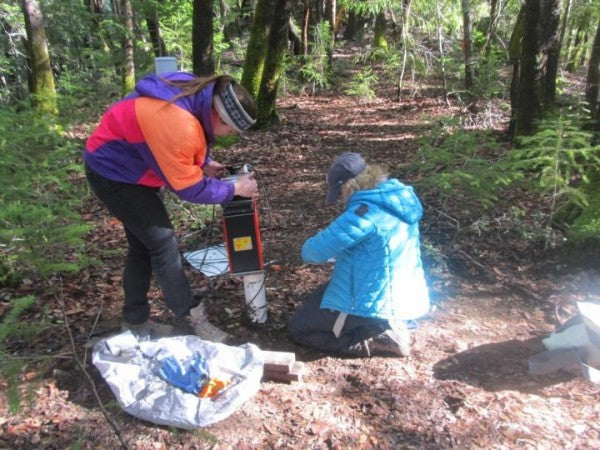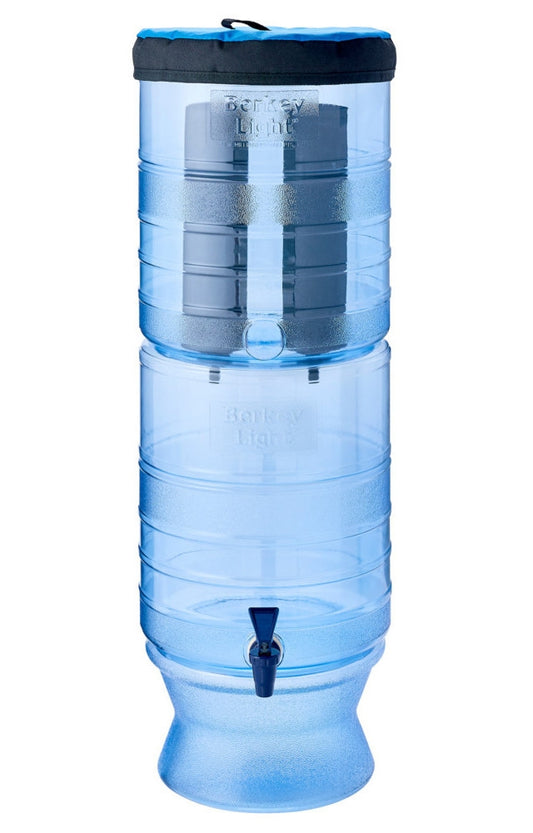
'Rock Moisture' Could Protect Forests from Drought
By Dan DeBaunShare
Water trapped within layers of rock may offer forest trees a lifeline during extended periods of drought, a new study has found.
In a report that was recently published in the scientific journal PNAS, a team of researchers examined water stored within a layer of bedrock that is typically found beneath layers of soil in mountainous areas. Sandwiched between soils above and groundwater below, it is a zone that is very often overlooked by hydrologists. But on closer inspection, the research team found that water trapped within the pores and fractures of this rock layer could play a vital role in both the local and global water cycle.
"There are significant hydrologic dynamics in weathered bedrock environments, but they are not traditionally investigated because they are hard to access," said lead author Daniella Rempe, an assistant professor in the Department of Geological Sciences at the UT Austin Jackson School of Geosciences. "The study was designed to investigate this region directly."

Research led by The University of Texas at Austin has found that weathered bedrock can store a significant amount of rock moisture inside its fractures and pores. This moisture in the layer of weathered rock that is commonly located beneath soils is an important part of the water cycle on the local and global level. Tree roots tap into the rock moisture and release it back into the atmosphere as water vapor, and water flows through the fractures and becomes part of the seasonal groundwater storage (blue arrows). Credit: University of Texas at Austin Jackson School of Geosciences.
The researchers discovered that water trapped within the weathered bedrock is able to sustain forest trees through periods of drought even after the top layers of soil have become parched. Field samples taken from a site in Mendocino County, Northern California revealed that as much as 27% of the region's annual rainfall was stored within the pores and cracks of the bedrock as "rock moisture".
While the beneficial effects of rock moisture is likely to vary from region to region, and also according to topography, the researchers believe it explains how trees in this area were not affected by the severe drought experienced between 2010 and 2015, which killed over 100 million trees across California.
"How trees can survive extended periods of severe drought has been a mystery," said Richard Yuretich, director of the National Science Foundation's Critical Zone Observatories program, which funded the research. "This study has revealed a significant reservoir of trapped water that has gone unnoticed in the past. Research of this kind can help greatly in managing natural resources during times of environmental stress."
For the study, the team monitored rock moisture content of nine well points drilled into the weathered bedrock that were sited on a steeply sloping hillside covered in forest from 2013 to 2016.

Lead author Daniella Rempe, an assistant professor at the Jackson School of Geosciences, with a deep borehole drill at the research site. The research team used the drill to make wells to monitor rock moisture. Credit: The University of Texas at Austin Jackson School of Geosciences.
They discovered that between 4-21 inches of moisture accumulated within the weathered bedrock layer over the winter rainy season, with some variance between wells. They found that the maximum level of moisture within each well remained roughly the same for the duration of the study, including during a year that experienced significant drought. This major finding suggests that the amount of rainfall experienced in the winter dry season is irrelevant, and the total amount of rainfall has little impact on the level of rock moisture that accumulates in the bedrock.
"It doesn't matter how much it rains in the winter, rock moisture builds up to the same maximum value," Rempe said. "That leads to the same amount of water every summer that's available for use by trees."
When comparing average moisture levels between bedrock and surrounding soil, the research team found that rock moisture levels in all wells were higher than soil moisture for all locations monitored.
While Rempe believes that moisture held within soil is important, the underlying bedrock could play a greater role in determining whether an area is going be water stressed during periods of drought.
Rock moisture that is taken up by trees can potentially be evaporated from tree leaves into the surrounding air, or it can trickle down through cracks in the rock into the groundwater below. Consequently, it could play a wider role in the environment as well as climate. According to Zong-Liang Yang, a colleague of Rempe's who did not take part in the research, this study highlights the need to incorporate rock moisture in hydrological and global climate models.
Journal Reference
Daniella M. Rempe el al., "Rock moisture: Direct observations of a hidden component of the hydrologic cycle," PNAS (2018). www.pnas.org/cgi/doi/10.1073/pnas.1800141115
-
Regular price From $302.00 USDRegular priceUnit price / per
-
Regular price $234.00 USDRegular priceUnit price / per
-

 Sold outRegular price From $305.00 USDRegular priceUnit price / per
Sold outRegular price From $305.00 USDRegular priceUnit price / per -
Regular price $327.00 USDRegular priceUnit price / per
-
Regular price From $367.00 USDRegular priceUnit price / per
-
Regular price From $408.00 USDRegular priceUnit price / per
-
Regular price From $451.00 USDRegular priceUnit price / per

Dan DeBaun
Dan DeBaun is the owner and operator of Big Berkey Water Filters. Prior to Berkey, Dan was an asset manager for a major telecommunications company. He graduated from Rutgers with an undergraduate degree in industrial engineering, followed by an MBA in finance from Rutgers as well. Dan enjoys biohacking, exercising, meditation, beach life, and spending time with family and friends.
~ The Owner of Big Berkey Water Filters















